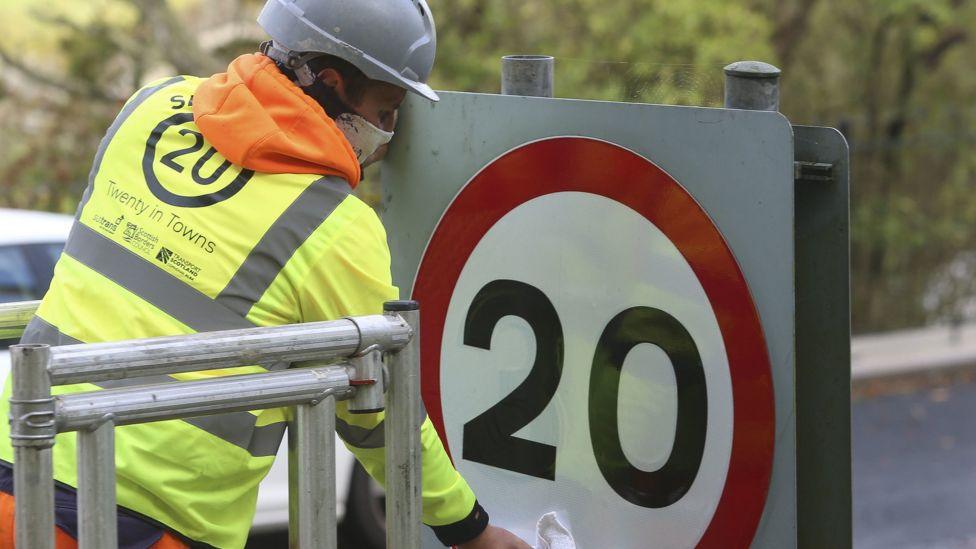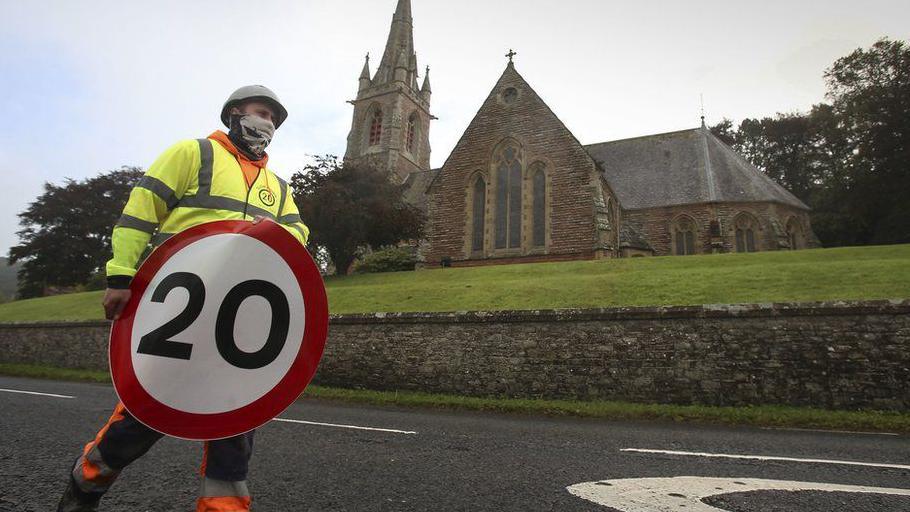Trial 20mph speed limits in Borders set to become permanent

The signs went up across the Borders in October last year
At a glance
Scottish Borders Council introduced temporary 20mph limits in more than 90 towns and villages last year
A study has shown it has produced a speed reduction from vehicles in most locations
The local authority is being advised to make the limits permanent
- Published
A trial of 20mph speed limits across towns and villages in the Borders is set to be made permanent.
They were introduced at more than 90 different locations in the region in October last year.
The project's aim was to encourage more active travel - including walking and cycling - as well as improve safety.
An independent evaluation by experts from Edinburgh Napier University has found speed reductions in most areas.
Scottish Borders Council said it had also taken on board feedback from thousands of members of the public and community councils as well as working with Police Scotland and Transport Scotland.
It is due to meet to discuss making the move permanent.

The council is being advised to make the 20mph limits permanent
A full council meeting is being recommended to make 20mph the default limit across towns and villages - although some will get 30mph or 40mph "buffer zones".
These proposed locations are available to view on the Council's website., external
Gordon Edgar, SBC's executive member for infrastructure, travel and transport, said: "The introduction of a 20mph speed limit across our towns and villages was a bold step but we felt it was important to give it a try and see what benefits it would bring.
"By working with Edinburgh Napier University's Transport Research Institute on this project, we were able to get a completely independent evaluation of the trial's effectiveness.
"The fact their data shows a reduction in speeds across the Borders is really encouraging news."
He said responses from the public had been "varied" but it was clear that people had "noted the value" of the limit - especially in residential areas and near schools.